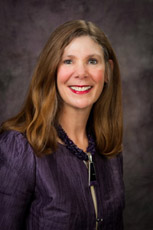November 11, 2015
From the provost: Faculty Compensation Task Force appointed

Dear Faculty and Staff,
Great universities are built around great faculty and staff members. That recognition is core to our K-State 2025 Faculty and Staff goals and competitive compensation is integral to achieving those goals. In June 2013, we put in place a three-year compensation improvement plan for fiscal years 2014-2016 to address faculty and unclassified salaries. Several elements of this plan drew on recommendations of the 2012 Faculty Compensation Task Force report, "Structuring Faculty Salaries Toward K-State 2025 and Beyond," which is available on the K-State 2025 Faculty Compensation Planning website. It is now time to plan for the next three years fiscal years 2017-2019.
After consultation with Faculty Senate leadership, President Schulz and I have appointed a second Faculty Compensation Task Force to make recommendations for faculty compensation for the next three-year plan. As before, the task force members include four appointed by Faculty Senate and four by administration. To provide continuity in this work, four members served on the original task force. The members are:
- John Buckwalter, dean of the College of Human Ecology
- Betsy Cauble, associate professor of sociology, anthropology and social work
- Lori Goetsch, dean of K-State Libraries
- Julia Keen, professor of architectural engineering and construction sciences
- Brian Lindshield, associate professor of human nutrition
- Gary Pierzynski, department head of agronomy
- Stephanie Rolley, department head of landscape architecture and regional & community planning
- Brian Spooner, division head of biology
Ethan Erickson and Brian Niehoff will serve as ex-officio members in their respective capacities as assistant vice president for budget planning and associate provost for institutional effectiveness to provide resources as needed.
I have charged the task force to review faculty compensation progress to date and our peer comparisons rankings and to recommend faculty compensation strategy priorities for the next three years, building from the original 2012 Task Force charge and report. What strategies from the first three-year plan need to be continued? What new strategies need to be put in place to advance our rankings and competitive compensation goals?
Planning for improved compensation for unclassified professional staff and university support staff is already underway through the Total Rewards initiatives being led by Vice President Cheryl Johnson and the Division of Human Capital Services. We expect to have recommendations from the Faculty Compensation Task Force and Vice President Johnson by early February to be considered this spring as part of our three-year budget planning process.
As we head into this next phase of compensation planning, we are aware that we must balance the need for improved compensation with the budget realities we face. State support for salaries is expected to remain flat for the foreseeable future. As has been the case for the past three years, new investments will require increased tuition and fees and internal reallocations. That said, we have been able to make substantial new investments in compensation even within our challenged budgetary climate.
- Faculty promotions: $2,601,939. Promotion increments were increased from 8 to 15 percent of the K-State average annual salaries for faculty members moving from assistant to associate professor and associate professor to professor.
- Promotion enhancements: $1,409,449. Promotion enhancements were provided over three years to those faculty members who were promoted in the five years prior to spring 2013 to bring their promotion raises up to the 15 percent level.
- Targeted Faculty Salary Enhancements: $1,478,062. The Faculty Salary Enhancement Award program was reinstituted and the enhancement amount increased from $2,500 to $3,000. These funds have been utilized to address any number of salary issues including compression, inversion and equity.
- Professorial Performance Awards: $1,021,537. These awards continue to be fully funded and available to faculty at the rank of professor every five years pending successful departmental and college recommendations.
- Merit Pool: Approximately $8 million. Unclassified faculty and staff merit increases were funded mid-year for fiscal year 2014 and for fiscal year 2015 at more than $4 million each. Unfortunately, we were unable to implement a merit increase for fiscal year 2016.
As a result of our first three-year compensation improvement plan, average faculty salaries across all ranks have risen, particularly for tenured and tenure-track faculty, but we still have a way to go to achieve competitive compensation with our peers. I thank all the members of the Faculty Compensation Task Force for their willingness to serve and look forward to receiving their report.
Competitive compensation for recruiting and retaining our faculty is essential if we are to achieve status as a Top 50 public research university by 2025. Through commitment and working together, we will find ways to proceed on this path.
Thanks for all you do!
April
